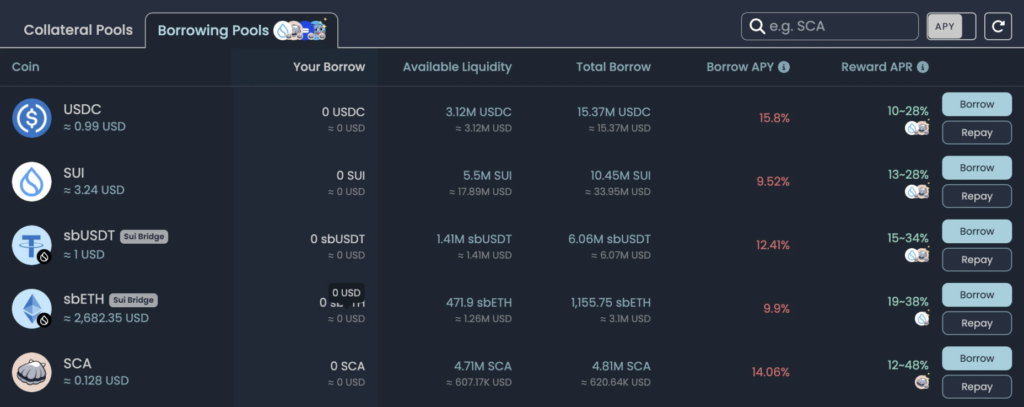Altcoin trading is really difficult, Altcoins keep falling, and PVP keeps losing. Rather than continuing to be obsessed, it's better to turn back.
As the difficulty of market operations rises sharply, more and more users are starting to turn their attention to more controllable earning opportunities. In response to this demand, Odaily has decided to open the "A Lazier U-Based Finance Strategy" column. This column will cover the relatively low-risk (systemic risk can never be eliminated) yield strategies based on stablecoins (and their derivative tokens) currently in the market, aiming to help those users who hope to gradually expand their capital scale through U-based finance to find more ideal income opportunities.
This column is tentatively updated weekly. If reader feedback is high, BTC, ETH, and SOL-based strategies will also be released in the future.
Here's a "hot" piece of knowledge: In the past 20 years (October 15, 2004 to October 14, 2024), the average annual yield of "Warren Buffett" is about 10.96%, while in the crypto market, which is still in the early stages of financialization and structuring, any ordinary person can easily surpass this figure.
Basic Yield Rate (Lowest Efficiency)
The so-called basic yield rate temporarily covers the single-currency finance plans of mainstream CEXs, as well as the mainstream on-chain lending, DEX LP, and RWA deposit plans in DeFi.
CEX End
Binance
- USDT single-currency finance (apy) is currently 2.7%, with an additional 5% bonus for 0-500 USDT; USDC single-currency finance is currently 1.89%, with an additional 7% bonus for 0-500 USDC;
OKX
- USDT single-currency finance is currently 2%; USDC single-currency finance is currently 2%;
Bitget
- USDT single-currency finance is currently 4.12%, with an additional 8% bonus for 0-500 USDT.
On-Chain
Ethereum
- Aave: USDT 4.18%; USDC 4.27%; DAI 5.13%;
- Fluid: USDT 9.43%; USDC 8.07%;
- Ethena: sUSDe 9%;
- Sky: sUSDS 8.75%;
Solana
- Kamino: USDT 4.72%; USDC 6.53%; PYUSD 6.56%; USDS - USDC LP 11.24%;
- margin.fi: USDT 5.69%; USDC 5.87%; PYUSD 6.41%;
Base
- Aave: USDC 5.04%;
- Aerodrome: USDC - USDT LP 13.88%.
Pendle Zone (Core Strategy)
Currently, in order to amplify the yield of stablecoins, it is basically impossible to avoid structured or leveraged products. Considering the safety and liquidity situation, Pendle is undoubtedly the most suitable venue.

As shown in the figure above, the PT yields of multiple stablecoins on Pendle can reach 15% or even higher, far exceeding the basic yield rate in the industry.
A relatively hot pool recently is the eUSDe (Ethreal's USDe deposit certificate) pool expiring on May 29, with a direct buy-in PT corresponding to an apy of 17.9%, corresponding to a yield of about 4.56% on the expiration date.
You can also choose to go to the LP (eUSDe - eUSDe PT) of this pool, and the corresponding yield will drop to 7.546% (it will increase to 9.09% if there is sufficient PENDLE staked), but you can also get 1.6 times the Ethreal score bonus and 50 times the Ethena Sats score bonus - early withdrawal will have Impermanent Loss, but holding until maturity will gradually offset this loss.
In addition, the "old-fashioned gold pool" sUSDe (Ethena, USDe after staking) is still very popular. The pool expiring on March 27 has a direct buy-in PT corresponding to an apy of 14.8% (the sUSDe-based yield on the expiration date is 1.21%), and the pool expiring on May 29 has a direct buy-in PT corresponding to an apy of 13.49% (the sUSDe-based yield on the expiration date is 3.44%). Adding the 9% apy of sUSDe itself, the comprehensive apy can break through 20%.

Ecological Incentives (Opportunities and Volatility Coexist)
This part mainly covers the currently popular ecologies, especially those that are implementing incentive programs in various forms. The common feature of these ecologies is that the early paper yield is often extremely high, but the reward is generally in the form of ecology tokens or ecology protocol tokens, and the final yield is linked to the token price performance.
For example, the currently popular Sonic, taking the mainstream DEX protocol Shadow in this ecology as an example, the apr (note that this is apr, not apy) of the USDC.e - scUSD LP on this DEX is temporarily 38.2%, and the apr of the USDC.e - USDT LP is as high as 57.3%.

However, the main reward composition of such pools is mainly the incentives of xSHADOW and GEMS - xSHADOW needs to be staked for 6 months to redeem 1:1 for SHADOW; GEMS are the airdrop certificates for Sonic's future, but according to the official disclosure, the first season will end and need to wait until around June 2025. Overall, although the yield is attractive, the realization of the incentives still has some uncertainty.
Another interesting ecosystem is Sui. Sui has recently opened up incentive subsidies for some protocols in the ecosystem, causing a relatively rare phenomenon of borrowing costs and yield inversion in lending protocols like Scallop - that is, the additional incentives for lending funds are greater than the borrowing cost. As shown in the figure below, without considering the Boost amplification of the pledge, the lending incentives of SUI, sbETH, and sbUSDC in Scallop are higher than the borrowing interest rate, which means that users can profit from both deposits and borrowings.

Blind Mining Opportunities (Suggested "Catching Two Birds with One Stone")
This part mainly focuses on those projects that have not yet had a TGE, but have already opened up deposit channels. Due to the uncertain future airdrop (airdrop) pool size, the profitability of this strategy fluctuates greatly, and it is relatively recommended to invest in those that already have a certain yield capacity, and can also take into account the "catching two birds with one stone" opportunity of airdrops.
For example, the Ethreal mentioned earlier, the community likes to call it the "son" of Ethena, and currently directly depositing USDe into Ethreal can obtain the certificate token eUSDe, but this plan cannot generate yield, and there is no accelerated points, it is more recommended for long-term deposit users (actually just three months) to switch to Pendle LP.
Other opportunities I am currently participating in include 1) Symbiotic, mainly in the form of sUSDe, can accumulate points while earning 9% apy; 2) Soneium has just started, on the one hand hoping to earn the upcoming ASTR incentives, and on the other hand to gamble on potential airdrops; 3) Berachian also deposited some sUSDe through Concrete, but I am currently slightly regretful, one is that the monks are many and the meat is scarce, and the other is that the withdrawal is temporarily restricted; 4) I previously put some funds in the LP pool of Perena, but the apy has been low recently and I have withdrawn; 5) others also include putting some funds in Meteora to earn points, but not limited to stablecoins.
Leverage Ratio
Crypto risks always exist, so eggs should never be put in the same basket (although these baskets are often also on the same car...), my current stablecoin allocation plan is as follows, for reference only.
In terms of basic interest rates, I still have about 30% left, some in CEX, and some on popular chains like Solana, mainly for easy trading at any time;
Pendle is currently the main battlefield, with an investment scale of around 40%, but it will be distributed in different pools, both PT and LP will take some;
The investment in incentivized ecosystems is relatively small, less than 10%, I have some bias against AC and Fantom, so I am unlikely to heavily participate in Sonic;
About 20% is left for blind mining of various projects, the specific investment ratio depends on the project situation (basic yield rate, team background, audit status) and personal preferences.
I may adjust it again recently, and I'll follow up on the updates later.







